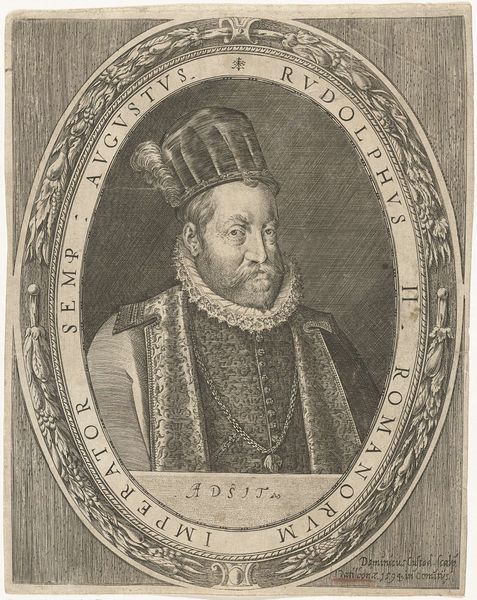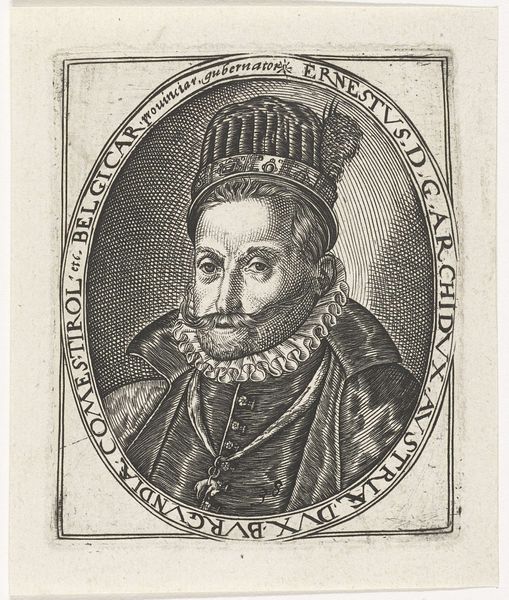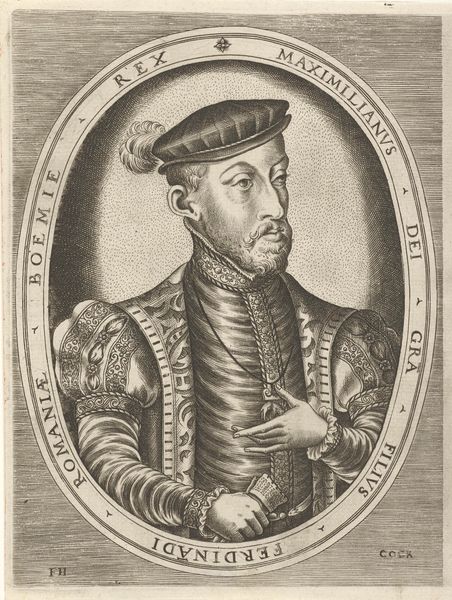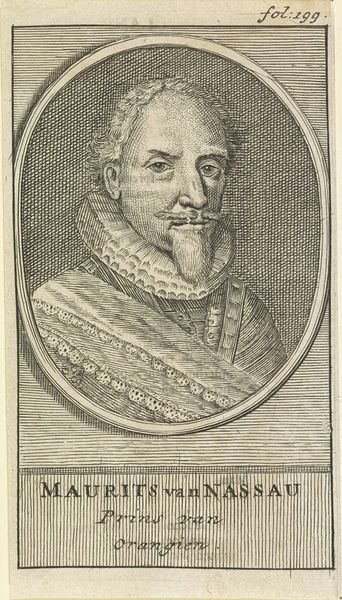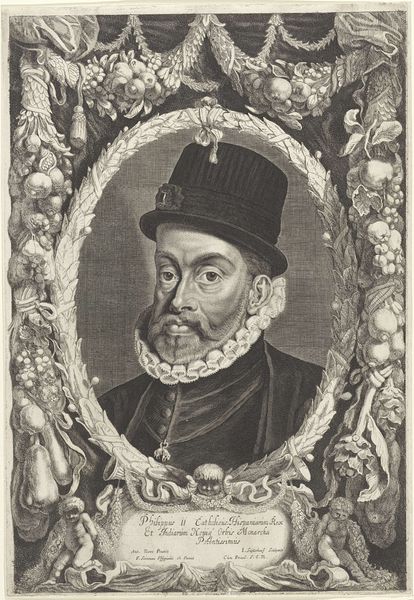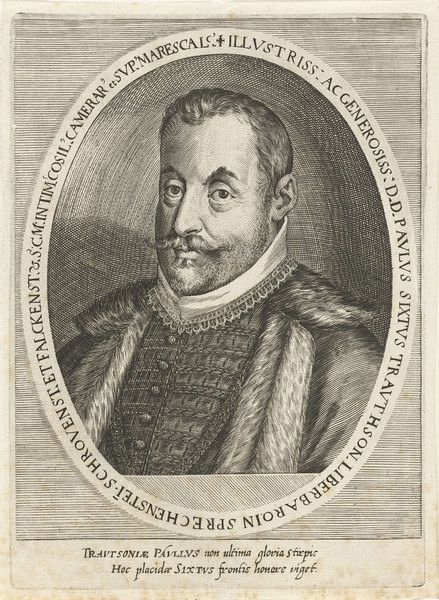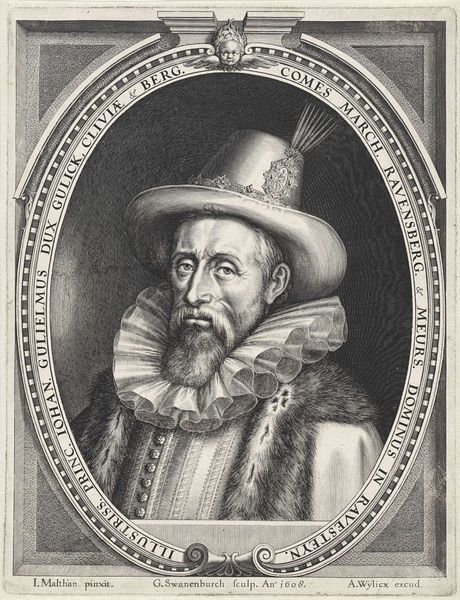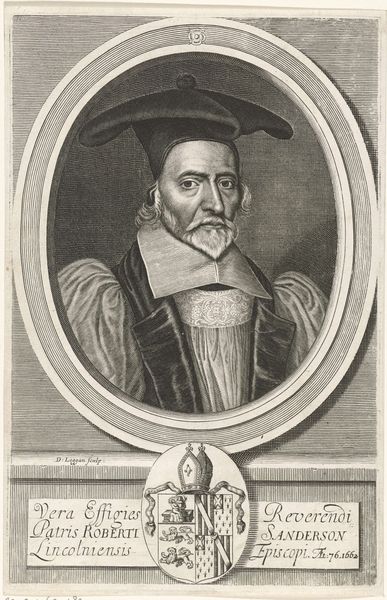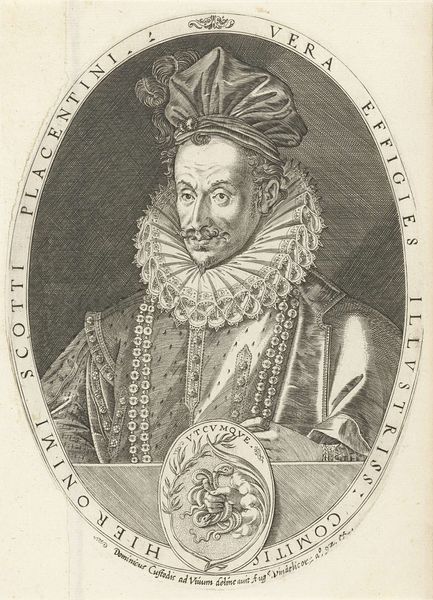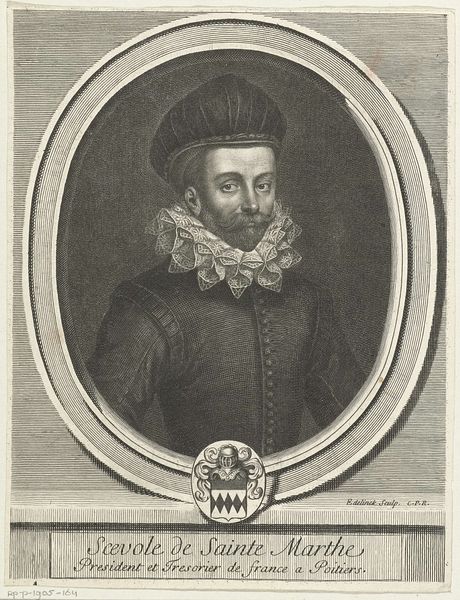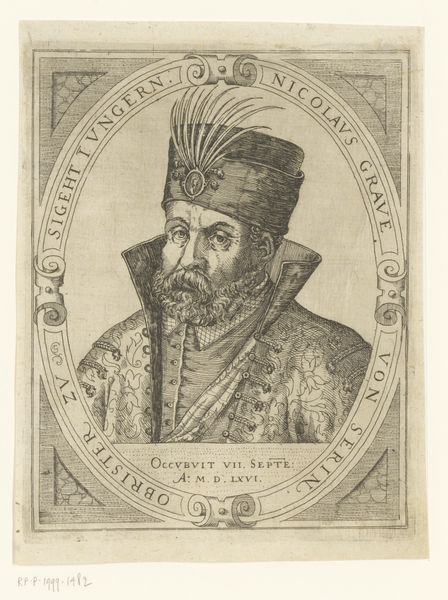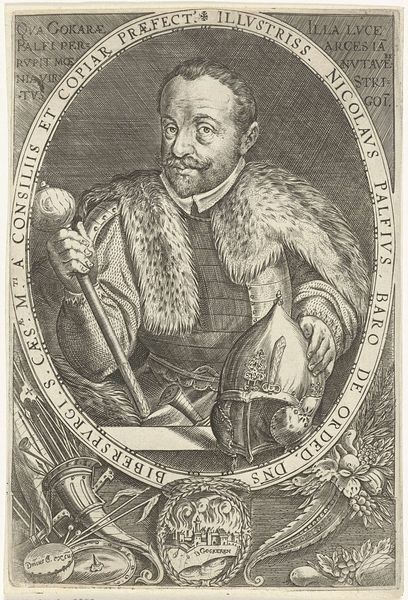
print, engraving
#
portrait
#
baroque
# print
#
old engraving style
#
11_renaissance
#
history-painting
#
engraving
Dimensions: height 155 mm, width 115 mm
Copyright: Rijks Museum: Open Domain
Curator: Looking at this engraving, titled "Portret van Filips II, koning van Spanje," we see Philip II, King of Spain. It’s estimated to be from between the 1590s and early 1600s and is attributed to Lambert Cornelisz. Editor: It strikes me as immediately austere, almost grim. The stark contrasts emphasize the gravity of his expression. Is it the typical ruler portrait, all power and presence? Curator: In some ways, yes, but there’s more to it than that. Consider the intricate detail, despite its relatively small scale, achieved through engraving. This was, after all, a man who projected an image of pious strength. Engravings like these were crucial for disseminating the image of the monarch, to propagate the symbolism of leadership and divine right, which was incredibly important at that time. The oval frame is a symbolic enclosure, representing authority. Editor: I see it more as reinforcing distance. Look at the layers of clothing, the high collar, the hat—each an item marking status, creating visible barriers. He looks trapped by his position. Especially when you understand the brutal legacy of colonization linked to his reign, you can interpret that trapped feeling as, perhaps, karmic. Curator: But think about the conscious messaging through visual symbolism! The inscription surrounding him acts almost like a halo. The details are incredible considering it is just ink and paper, so many details like the lines on his face and hair show us how strategic this must have been for how his image was perceived! Editor: Yes, engravings amplified reach, but at what cost? Representing figures of authority at the expense of the oppressed carries lasting repercussions, visually reinforcing the narratives we must continuously critique and resist. The meticulous detail doesn't erase history, it highlights whose stories were considered worth preserving and disseminating. Curator: It's true that images like this are powerful tools of propaganda, but as a historian I’m also interested in how we look back and re-interpret those visual cues, those messages. Editor: Absolutely. Art enables that continuous reassessment, prompting dialogue between then and now. That's why pieces like this aren’t just artifacts; they’re ongoing conversations.
Comments
No comments
Be the first to comment and join the conversation on the ultimate creative platform.
